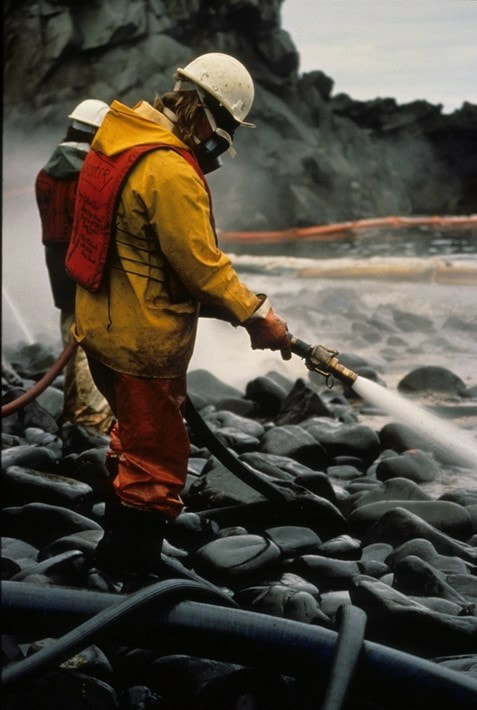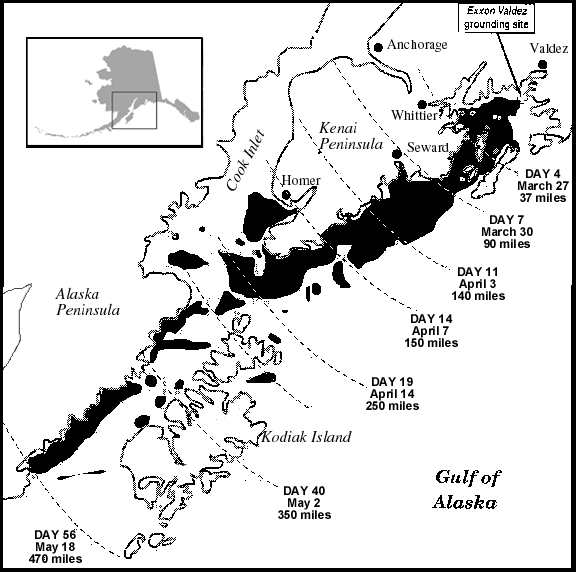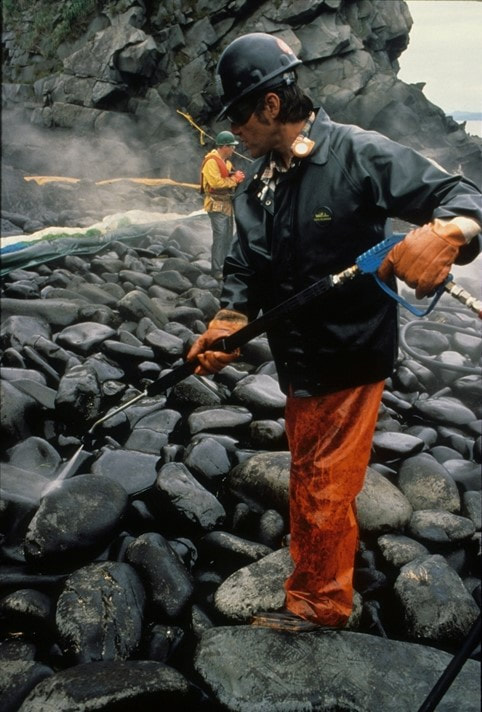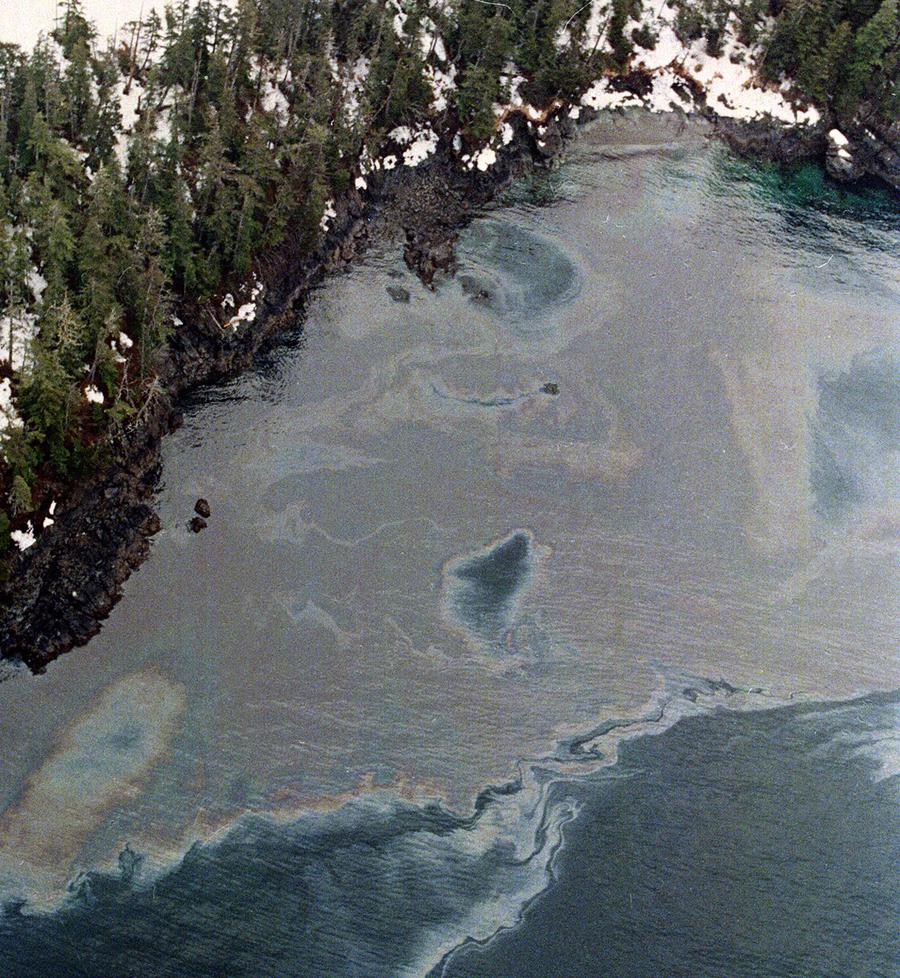Cleanup
Cleanup efforts were chaotic with no clear leadership, inefficient supplies, and lack of initiative. Exxon's slow response to gather needed equipment and people further exacerbated the scope of the spill.
|
Exxon Corporation Shipping President Frank Iarossi , 1989, Getty Images.
|
|
|
Lessons from the Exxon Valdez Oil Spill, 2013, New York Times.
Disorganization
"April 5th- It is two weeks since the Exxon Valdez hit Bligh Reef. Since then it has been day after day of mistakes by the oil companies and this still continues. Alyeska, who claimed they could respond to any spill, couldn't have responded to a spill two miles away. The equipment they had was outdated, too small and not ready to deploy. Once Exxon took over they were not ready for the logistics, currents or tide differential. No one was really in command for days ... Even with all the equipment they had only recovered 1 percent of the spill in two weeks." - Stan Stephens, April 1989, Record - Oil Spill. |
"April 10th- Anchored in Sawmill Bay, waiting weather and direction. Since the 27th of March, we have accomplished very little. Very poor direction, no one can do anything without orders from Exxon and Exxon is not capable of handling the logistics. There has never been enough or the right equipment since day one. They have mostly wrong boom, wrong pumps, inept ability to move, absolutely no supervision or leaders in the field to handle the job." - Stan Stephens, April 1989, Record - Oil Spill. |






